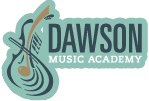
Violin Virtuosos: Selecting the Best Instrument
One important question new violin students typically ask is “Do you recommend renting or purchasing a violin?” While the answer may vary according to the musician’s goals, I have found from experience that renting is typically the best option for beginner violin students. Here’s a few reasons to consider when making your choice.
Affordable Pricing
At first glance, it’s easy to recognize that the monthly rental fee of around $25 is significantly more affordable than paying full price for a new violin. While many financial experts might say it’s better to make an initial one-time investment instead of paying monthly recurring costs, it’s important to note that renting a violin offers several advantages over purchasing one. First off, young students need a different-sized instrument every 9-15 months, depending on their growth spurts. Instead of having to repurchase an instrument every so often, it’s beneficial to rent from a reputable violin store that provides the option of trading up to the next violin size whenever needed. Another benefit of renting arises if the violin breaks or needs adjusting. Instead of parents investing additional money on the purchased instrument, most violin stores have the resources on hand to repair the instrument easily in both a timely and cost-effective manner. Finally, one of the most compelling reasons to rent is that many violin stores have a rent-to-own program. Many stores give a percentage of the monthly rental payments as a down payment towards the purchase of a new instrument. This is a great benefit once a child has finished growing and is ready to select the best quality instrument to meet his/her musical goals.
Instrument Quality
The quality of rental instruments provided through a reputable violin store typically far exceeds the quality of instrument purchased for a beginner violin student. When parents choose to purchase a beginning violin, it’s easy to make the mistake of selecting an instrument based on price, color, or personal preferences. If the instrument is a “toy violin” that young kids use for “pretend music,” it will present challenges for the student. Since “toy violins” aren’t built with the same specifications as quality violins, trying to play real music on them doesn’t work well. If the instrument isn’t built correctly or if it doesn’t hold tune the way it should, students become easily frustrated. Playing the violin takes practice and patience. Setting students up for success starts with choosing a quality instrument so that it supports student success instead of hinders their efforts. Once students have finished growing, I recommend they consider purchasing their own violin. It’s a big investment. Since there are several different brands of violins, each with its unique tone, it’s often helpful for students to establish musical goals and explore several styles before investing in the “perfect instrument.” Although playing on a quality instrument is important, it’s not necessary to spend a fortune (unless you want to). A quality beginning instrument usually starts around $150. For more advanced instruments, you can spend upwards of $1,000. Regardless of your price point, do your research to be sure it’s a quality instrument that produces good tones and provides ease of playing for the student.
Appropriate Sizing
For young musicians, I strongly recommend renting an instrument until the student is fully grown so that the student can easily adjust to the correct size instrument as needed. For students to experience success, their left hand should be able to hold the violin comfortably while the violin rests on their neck. If the violin is too large, students won’t be able to physically hold the violin without tiring out early in the playing process. If it’s too small, students may develop bad habits that hinder their musical success. Since a child’s size varies widely by age groups, it’s typically best to visit a store where a violin teacher can measure the child and fit them for the appropriate size violin. For players in between two sizes, it’s best to use the smaller size. Here’s a general size guide by age:
- 1/8 size : 4-5 years
- 1/4 size : 6-8 years
- 1/2 size: 9-10 years
- 3/4 size : 10-12 years
- Full size: 12 years & up
Important Accessories
Students who choose to rent a violin will typically be provided with the violin, a hard protective case, and a quality bow. The protective case serves an important role in maintaining the quality of instrument over time. It also provides ease of transporting the violin. If you choose to purchase a violin (or if a friend has one laying around that you decide to use for lessons), be sure that the bow is in good shape. Since the bow is primarily responsible for producing the beautiful sounds on the violin, it’s important to have a quality bow. For violinists of all ages, it’s important to take good care of the bow by having rosin on hand to use as needed. Rosin is an inexpensive, yet important factor in helping violinists produce clear tones. While it’s not a necessity, many young students find a shoulder rest helpful. For younger students, a foam shoulder rest often works well.
Recommended Resources
There are several different options for renting or purchasing quality violins. I’ve listed below a few options that I have found to provide excellent quality instruments that support student success.
*Village Violins: 3201 Lorna Rd, Birmingham, AL 35216, 205-413-1263
*Shar Music: Online Store; sharmusic.com; 800-248-7427
Contributor Julianne Odahowski Steele is a professional violinist and talented educator. Through her interaction with students ranging from young beginners at age 4 all the way to college music majors, she’s heard a wide range of different student instruments. Her primary focus is helping students play a quality instrument that supports their success in music.
